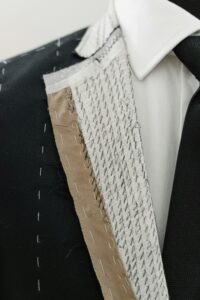



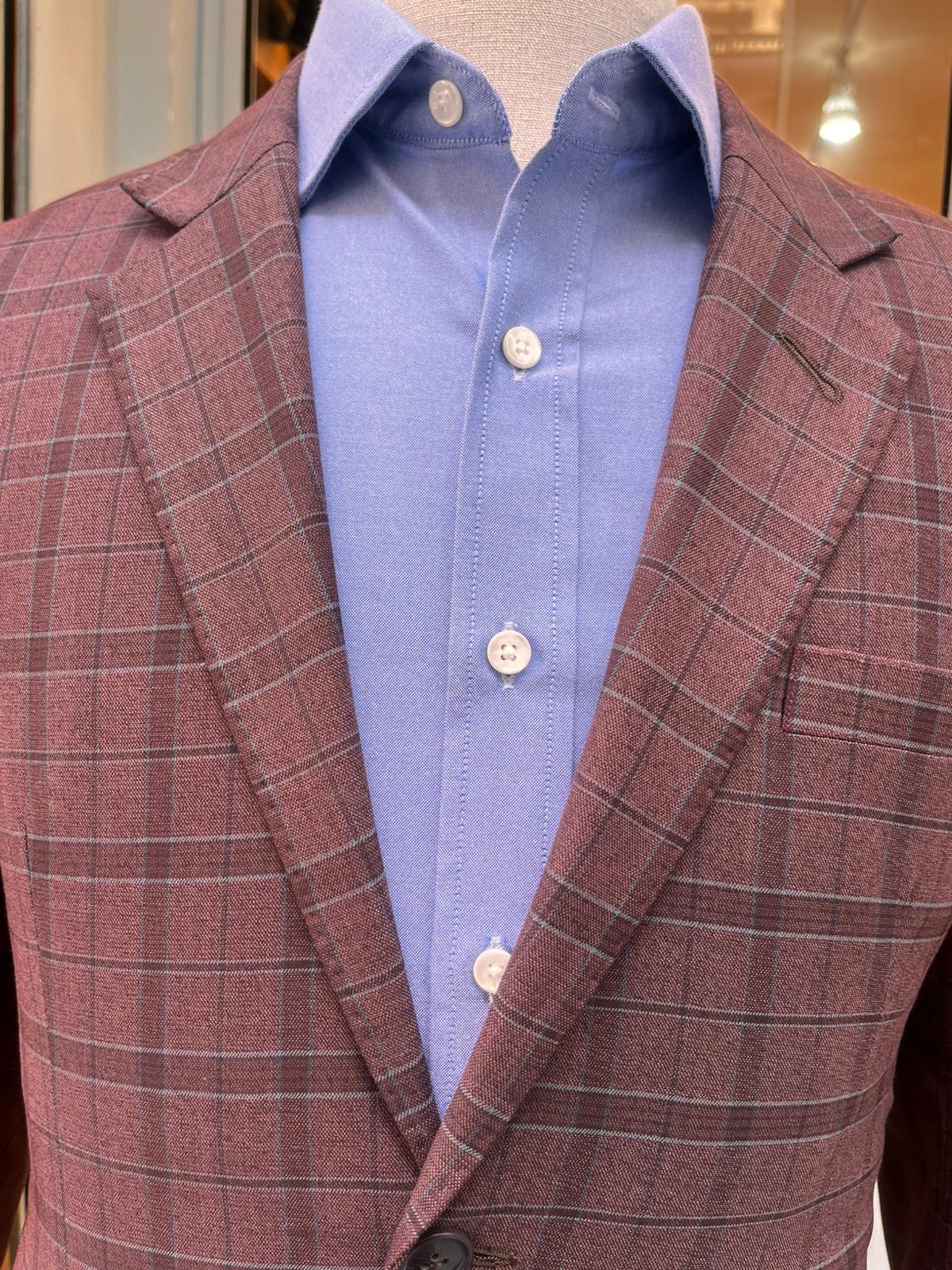
The Ultimate Guide to Suit Lapels: History, Types, and Styling Tips velour & Waza custom tailor
we’ll explore the different types of suit lapels—notch, peak, and shawl—and how to choose the right one for your style
Initially When you think about a well-tailored jacket, the detail that makes the biggest difference is the lapel. In particular From classic business suits to elegant tuxedos, Consequently the lapel defines the style and formality of the outfit. In this guide, we’ll break down the different types of suit lapels—notch, peak, and shawl—explaining their history, styling tips, and how to choose the right one for your body type and occasion.
Indeed The lapel is the folded flap of fabric on the front of a jacket, creat by folding back the collar and sewing it to the body of the coat. Lapels frame the shirt and tie, guiding the viewer’s eye toward the face.
Think of the lapel as the signature of a jacket—it sets the tone of the garment: sharp and authoritative, soft and casual, or sleek and formal.
Originally Lapels weren’t always part of men’s tailoring. During the 18th century, men’s coats had stiff, high collars without lapels. Around the early 19th century, gentlemen began unbuttoning the top of their coats and folding the fabric outward. This created the early form of lapels.
By the Victorian era, lapels became an intentional design element. Their width, shape, and gorge (the point where the lapel meets the collar) shifted with fashion trends:
1920s–30s: Wide lapels dominate, reflecting the bold styles of the jazz age.
1950s–60s: Slimmer lapels became fashionable, matching the cleans silhouette of the post-war period.
1970s: Extremely wide lapels returned, along with flared trousers.
1980s–90s: Conservative, medium-width lapels become the standard for business suits.
2000s onward: Both slim and classic lapels coexist, with style depending on occasion and personal preference.
Specifically Every jacket lapel falls into one of three categorie: notch, peak, or shawl. Let’s explore each in detail.
For example The notch lapel is the most common among the types of suit lapels available today
The notch lapel (sometimes called the step lapels) is the most common style. It’s defined by the small, triangular cut-out where the lapel meets the collar—forming a “notch.”
Where you’ll see it: Business suits, blazers, and casual jacket.
Best for: Everyday wear, business meetings, and semi-formal occasions.
Style tip: A medium-width notch lapel is the safest choice for most men.
In addition The notch lapel is versatile and understated, making it the backbone of modern suiting.
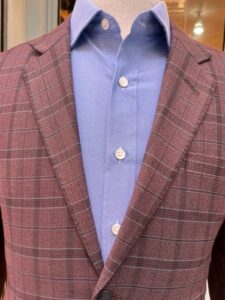
When people ask about the most formal types of suit lapels, the peak lapels is always the answer
The peak lapel is sharper and more formal. Instead of a notch, the lapel edges point upwards toward the shoulder.
Where you’ll see it: Double-breasted suits, tuxedos, and formal single-breasted jackets.
Best for: Weddings, black-tie events, and power dressing.
Style tip: Peak lapels create the illusion of broader shoulders, making them excellent for slimmer men.
In addition Peak lapels communicate confidence, authority, and elegance. If you want a jacket that stands out, this is the lapel to choose.
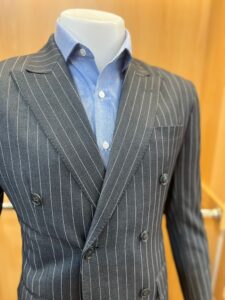
Furthermore the shawl lapel is smooth and rounded, in fact without any cuts or notches. It’s traditionally associated with evening wear.
Where you’ll see it: Tuxedos, smoking jackets, and dinner jackets.
Best for: Black-tie events and red-carpet occasions.
Style tip: Avoid shawl lapels for business settings; they’re strictly formal.
The shawl lapel carries an air of refinement and old-Hollywood glamo

ur.
Moreover Choosing the right width depends not only on your frame but also on the types of suit lapels you prefer.
Beyond the shape, lapel width plays a huge role in the overall look of a suit.
Slim lapels (2.5–3 inches) → Trendy, modern, youthful. Best for slimmer builds.
Classic/medium lapels (3–3.5 inches) → Timeless and versatile. Works on most body types.
Wide lapels (3.75–4.5 inches) → Bold, retro-inspired, powerful. Great for larger frames.
Lapel width should match your body frame and tie width. A skinny tie with a wide lapel looks mismatched, while a broad tie on a slim lapel feels unbalanced.
Specifically The gorge is the point where the collar meets the lapel. Its height affects the style dramatically:
High gorge (closer to the shoulders) → Moderns, sharp look. Common in Italian tailoring.
Low gorge (closer to the chest) → Vintage and relaxed. Seen in 70s suits and some bespoke styles.
When choosing a custom suit, pay attention to gorge height—it subtly changes how your upper body looks….
In fact Choosing the right lapel isn’t just about fashion—it’s about proportion.
Slim build: Peak lapels or slim notch lapels add structure and sharpness.
Athletic build: Medium-width notch or peak lapels maintains balance.
Broad build: Wider lapels prevent the chest from looking cramped.
Shorter height: Higher gorge and slimmer lapels elongate the torso.
For instance Not all lapels work for every event. Here’s a quick guide:
Business Meetings → Notch lapel (classic width).
Weddings → Peak lapels (formal single- or double-breasted).
Black Tie → Shawl lapel or peak lapel tuxedo.
Casual Events → Notch lapel blazer (cotton, linen, or mixed fabric).
Double-breasted jackets with peak lapels projct authority—perfect for men who want to make a bold style statement.
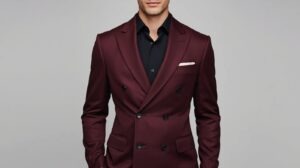
Additionally While tradition still dominates, modern tailoring experiments with lapel styles:
Contrasting fabrics (velvet shawl lapels on tuxedos).
Extra-wide lapels on fashion-forward suits.
Ultra-slim lapels in minimalist tailoring.
Hand-stitched edges for artisanal details.
Specifically Custom tailoring lets you decide how adventurous or conservative you want your lapel design to be.
Furthermore A lapel is more than fabric—it’s craftsmanship. High-quality lapels show details like:
Crisp roll (the gentle curve of the lapel).
Hand-padded canvas inside, not glued fusing.
Even stitching and finishing.
Proportional width that complements the jacket.
In fact When trying on a suit, check how the lapel lies on the chest. If it feels stiff or unnatural, it’s likely a cheaper fused construction.
Ultimately The lapel might look like a small detail, but it speaks volumes. It reflects tradition, craftsmanship, and personal style. Whether you choose a notch, peak, or shawl, understanding the types of suit lapels will help you pick the perfect jacket for any occasion, the lapel is your jacket’s most expressive feature.
When investing in a suit, don’t overlook the lapel. Instead, treat it as the signature that defines your look. After all, when someone notices your suit, the lapel is often the first detail their eyes land on.
At Velour & Waza Custom Tailor Bangkok sukhumvit, every detail matters—from the fabric to the lapel design. Our expert tailors will help you choose the perfect style for your body type, occasion, and personality.


